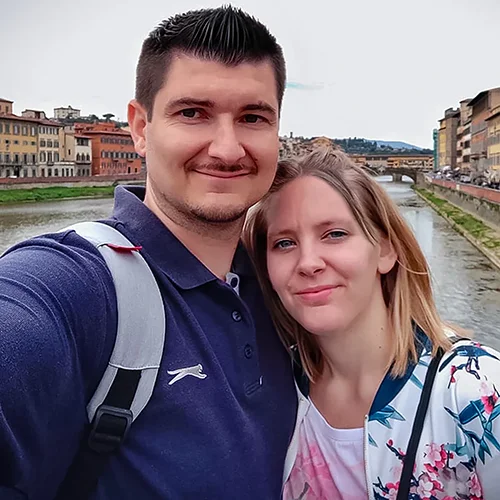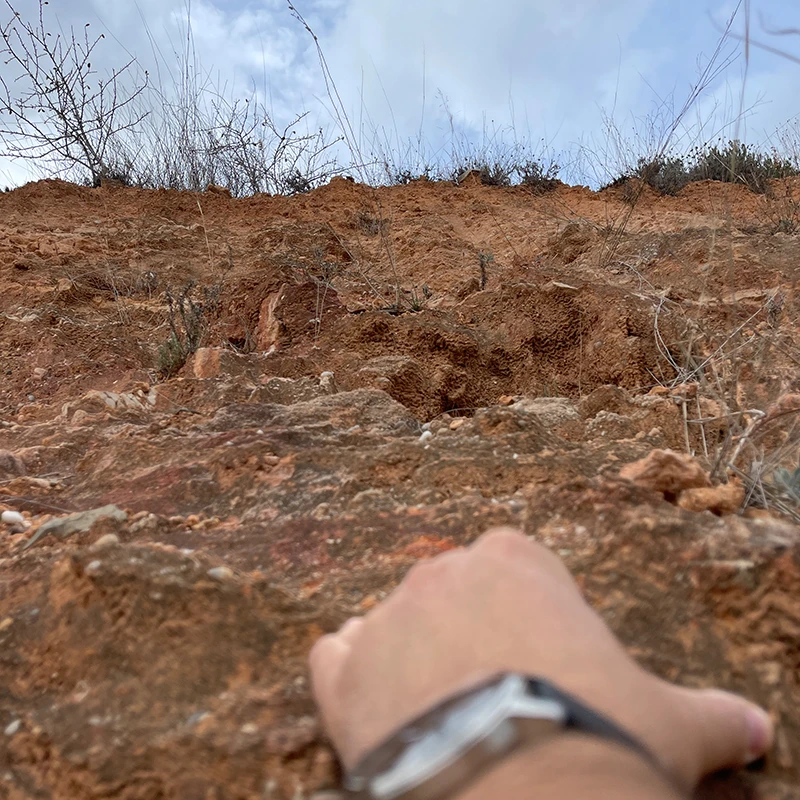Hang in there: Our journey to our dream home in SpainHang in there!
Hang in there: Our journey to our dream home in SpainHang in there!
Hang in there: Our journey to our dream home in SpainHang in there!
Hang in there: Our journey to our dream home in SpainHang in there!
3. März 2024
Feedback: 0
When we decided to move to Spain, we knew it wouldn’t be a walk in the park. But again and again, we were told, „With your standards and your budget, you’ll never find anything in Spain – prices have risen here too.“ Giving up? Not our thing! We persevered, and in the end, it was worth it. Here, you’ll learn what we discovered and why patience and perseverance are key when searching for property in Spain.
What are we actually looking for?
Our dream house should:
◉ Be a large house with land
◉ Be in a quiet and natural environment
◉ Have an unobstructed view
◉ Offer tranquility and connection to nature
◉ Be budget-friendly
Is that a problem? Here’s a clear MAYBE. Spain is not Germany. Life here mostly happens outdoors, thanks to the beautiful weather year-round. That’s why many houses come with spacious terraces and outdoor kitchens, while indoor spaces are often smaller. Sounds perfect? Not always.
Living space vs. built-up area
A common stumbling block when looking for property in Spain is that listings usually state the built-up area, which includes terraces, garages, or even a pool. What looks like 200 m² on paper might only mean 80 m² of living space – and that’s if there isn’t an additional shed or outbuilding on the property.
Our tip for property hunting
Use the „Sede Electrónica del Catastro„ (Spanish cadastral office) to find the exact living area. It lists all buildings on the property with precise sizes. However, patience is needed! Especially with private sellers, the address is often only shared shortly before the viewing. Why? To protect against Okupas (squatters) and vandalism.
⚠️ Important note ⚠️
Even after extensive pre-discussions with real estate agents, we found that not a single property had the advertised living space of at least 100 m². What sounds great on paper often turns out to be disappointing during the visit. So, always double-check – and start your research early!
Types of plots in Spain
In Spain, there are three main types of plots, which influence price and usage options:
◉ 1. Suelo urbanizable: Land that is rural but intended for urban development. It can be converted into „suelo urbano“.
◉ 2. Suelo urbano: Fully developed land with access to electricity, water, and sewage. Ideal if you want urban infrastructure nearby.
◉ 3. Suelo no urbanizable (rústico): Rural, protected land that can only be built on under certain conditions. Expanding existing structures is often not allowed.
🏠 Our choice 🏠
As you might have guessed: we chose a „Suelo no urbanizable“ property. Why? It’s simple: here, we can live our dream of independence. With modern solar technology, an existing water connection, and the possibility to install a small wastewater treatment system, everything is set for an autonomous, nature-based lifestyle.
Thanks to Spain’s abundant sunshine, solar energy makes perfect sense, and our property provides the freedom to implement this vision. Independence in the midst of nature – exactly what we were looking for!
The property purchase: Patience and WhatsApp
We found our dream house in the most classic way – online. But the first hurdle wasn’t far away: the real estate agent simply didn’t respond. Giving up? Not our style! Instead, we scoured the agent’s website and found his phone number.
In Spain, everything runs on WhatsApp, so we messaged him directly. Two days later, we were standing in front of the property. The agent spoke English – at a speed that could rival a high-speed train – and kept throwing in Spanish terms. But we managed to understand each other. After just a few minutes, we knew: This could be it!
Our dream house – found and in love
We had found our property with this house – perseverance pays off! Now we hope that everything goes according to plan and that we can sign the reservation contract soon. What convinced us so much?
We found our dream property, and it fits perfectly:
◉ Over 150 m² of living space on the ground floor
◉ An expandable attic with 60 m²
◉ A spacious 4,000 m² plot
◉ All for just two-thirds of our budget!
That leaves enough money for renovations and a financially relaxed life.
A deal with a twist
Excitedly, we told the agent we wanted to make an offer. Then came the shock: he demanded a signature and a €1,000 deposit before passing our offer to the seller.
Excuse me? We have to sign something and pay a deposit just to submit our offer? Our first reaction was: No way! Or maybe?
Fortunately, we had already arranged for a German-speaking lawyer to assist us with the property purchase. A quick WhatsApp message and 30 minutes later, we had the green light. Of course, our lawyer reviewed the document first. His assessment? This process is now quite normal in Spain.
Why this deposit is common
Many agents use this practice to ensure that buyers have serious intentions and aren’t making offers on a whim and then backing out. Don’t worry: if the seller rejects the offer or there are issues with the property, the deposit is refunded. It’s also deducted from the purchase price later.
It might seem dubious at first, but with the right support – in our case, a knowledgeable lawyer – we felt secure and well-advised. This allowed us to take another step toward our dream house.
Expensive paperwork, but worth it
With the signature and the €1,000 deposit, the first step was done. The agent began assembling the documents and sent everything to our lawyer. He promised to review them within 24 hours – and we could only wait.
Conclusion: Perseverance pays off
The road to owning your own home in Spain is often rocky, but patience and persistence pay off. Our dream home is proof that perseverance pays off. With a little planning, a sense of humor and the right support, anything is possible. Find out whether our favorite is really “clean” in the next article. Stay tuned – and ¡hasta pronto!
That was just a small insight into our adventure. If you would like to find out more about our journey, take a look at our article on finding an apartment or house. We’d love you to keep following us – there’s still so much to discover!

Wir sind zwei deutsche Auswanderer und auf emigres-life nehmen wir Dich mit auf unsere Reise in ein neues Leben.
In unserem Projekt schwingt das Pendel meist in Richtung stressig oder chaotisch und weniger in Richtung tiefenentspannt.
Wenn du also wissen willst, in welches Fettnäpfchen wir als nächstes treten oder welche Hürden vor uns liegen und wie wir sie überwinden, dann bleib dran.
Nächster Blogpost
Durchhalten: Unsere Reise zum Traumhaus in Spanien



 Pin it!
Pin it!

